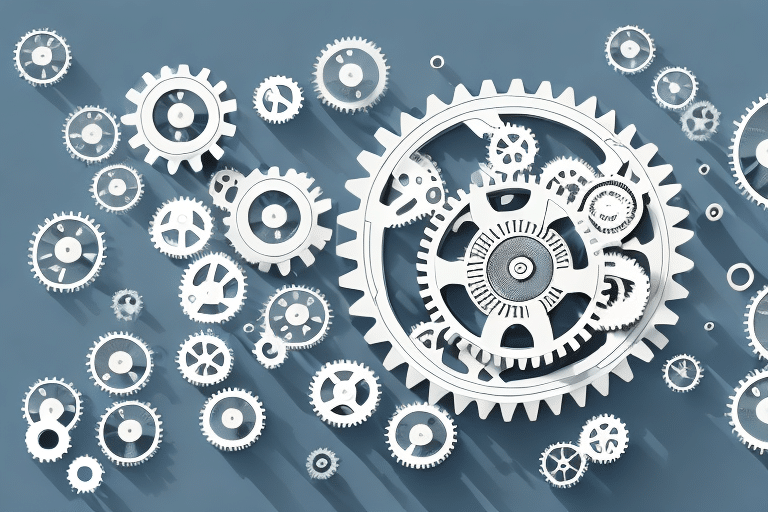Introduction to Condition-Based Maintenance (CBM)
Condition-Based Maintenance (CBM) is a proactive maintenance strategy that leverages technology and data analytics to predict equipment failures before they occur. By continuously monitoring the condition of machinery through sensors and data collection, CBM enables timely maintenance actions. This approach aims to minimize unplanned downtime, extend the lifespan of equipment, and reduce overall maintenance costs. Understanding CBM is essential for businesses seeking to enhance operational efficiency and reliability.
Benefits of Implementing CBM
Reduced Unplanned Downtime
One of the primary advantages of CBM is the significant reduction in unplanned downtime. By identifying potential issues early, businesses can schedule maintenance during planned outages, ensuring continuous operations. According to a Forbes article, companies implementing CBM have seen downtime decrease by up to 30%.
Cost Savings
CBM helps in minimizing maintenance costs by preventing minor issues from escalating into major repairs. It allows for the optimization of spare parts inventory and reduces the need for emergency repairs, leading to significant financial savings.
Extended Equipment Lifespan
Regular and timely maintenance ensures that equipment operates efficiently, thereby extending its operational lifespan. This not only delays capital expenditures but also maximizes the return on investment for machinery.
Enhanced Workplace Safety
By monitoring equipment health, CBM helps in identifying and mitigating potential safety hazards. This proactive approach reduces the risk of accidents and ensures a safer working environment.
Improved Operational Efficiency
CBM contributes to higher operational efficiency by ensuring that all equipment functions optimally. This leads to increased productivity, better quality of output, and enhanced customer satisfaction.
Key Components of a Successful CBM Strategy
Identification of Critical Equipment
Companies must first identify which pieces of equipment are critical to their operations and most likely to benefit from CBM. Prioritizing these assets ensures that maintenance efforts yield maximum returns.
Selection of Appropriate Sensors
Choosing the right sensors is crucial for accurate data collection. Sensors should be capable of measuring relevant parameters such as vibration, temperature, pressure, and humidity. Advanced sensors provide more precise data, enhancing predictive capabilities.
Data Collection and Analysis
Continuous data collection is the backbone of CBM. Utilizing platforms like IBM's Industrial IoT, businesses can analyze real-time data to predict equipment failures and schedule maintenance activities effectively.
Maintenance Strategy Definition
Based on the insights gained from data analysis, companies should define clear maintenance strategies. This includes determining the optimal timing for maintenance tasks and the specific actions required to address identified issues.
Integration with Existing Systems
For CBM to be effective, it must seamlessly integrate with existing enterprise systems such as ERP (Enterprise Resource Planning) and CMMS (Computerized Maintenance Management Systems).
Continuous Improvement
CBM is not a one-time implementation but an ongoing process. Regularly reviewing and updating the CBM strategy ensures that it adapts to changing operational conditions and incorporates the latest technological advancements.
Implementing CBM: Best Practices and Tools
Best Practices
- Start Small: Begin with a pilot program to test CBM strategies on a limited number of critical assets.
- Invest in Training: Ensure that maintenance personnel are adequately trained to interpret data and perform predictive maintenance.
- Ensure Data Quality: High-quality, accurate data is essential for reliable predictions and maintenance decisions.
- Foster Cross-Functional Collaboration: Encourage collaboration between maintenance, IT, and operations teams to streamline CBM implementation.
- Leverage Advanced Analytics: Utilize machine learning and artificial intelligence to enhance predictive analytics capabilities.
Essential Tools
Implementing CBM effectively requires the use of advanced tools and technologies:
- Sensors and Monitoring Devices: Collect real-time data on various equipment parameters.
- IoT Platforms: Facilitate data integration and analysis from multiple sources. Platforms like GE Digital’s Predix offer robust solutions.
- Analytics Software: Utilize software such as SAS Analytics for in-depth data analysis and predictive modeling.
- Maintenance Management Systems: Systems like Maintenance Manager help in scheduling and tracking maintenance activities.
Real-Life Applications of CBM Across Industries
Manufacturing
In manufacturing, CBM monitors assembly lines, conveyor belts, and motors to prevent unexpected breakdowns. For example, General Electric (GE) uses CBM to enhance the reliability of its manufacturing equipment, resulting in significant productivity gains.
Aviation
The aviation industry utilizes CBM to monitor aircraft engines, landing gear, and other critical systems. Companies like Boeing implement CBM to ensure aircraft safety and reduce maintenance costs.
Oil and Gas
CBM is crucial in the oil and gas sector for monitoring pipelines, compressors, and pumps. Shell employs CBM to detect leaks and prevent equipment failures, thereby ensuring operational continuity and environmental safety.
Transportation
In transportation, CBM is used to monitor trains, buses, and other vehicles. For instance, Siemens uses CBM to maintain its fleet of trains, enhancing reliability and passenger safety.
Measuring and Optimizing CBM Performance
Key Performance Indicators (KPIs)
To measure the success of a CBM program, organizations should track the following KPIs:
- Uptime: The percentage of time equipment is operational and available.
- Mean Time Between Failures (MTBF): The average time between equipment failures.
- Mean Time to Repair (MTTR): The average time taken to repair equipment after a failure.
- Overall Equipment Effectiveness (OEE): A measure of how effectively equipment is utilized.
- Maintenance Costs: The total costs associated with maintenance activities.
Continuous Optimization
Regularly analyzing KPI data allows companies to identify areas for improvement. By refining maintenance strategies based on performance data, businesses can enhance the effectiveness of their CBM programs.
Challenges and Future of CBM
Common Challenges
- High Initial Investment: The cost of sensors, monitoring equipment, and software can be substantial.
- Data Management: Handling large volumes of data requires robust infrastructure and expertise.
- Skilled Personnel: There is a need for trained personnel who can analyze data and implement CBM strategies effectively.
- Resistance to Change: Employees may resist adopting new technologies and processes.
Future Trends
The future of CBM is closely tied to advancements in technology. Innovations in artificial intelligence (AI), machine learning, and the Internet of Things (IoT) are expected to enhance the predictive capabilities of CBM. Additionally, the integration of CBM with digital twins—virtual replicas of physical assets—will allow for more comprehensive simulations and maintenance planning. According to a McKinsey report, the adoption of these technologies could further reduce maintenance costs by up to 25% and increase equipment lifespan by 20%.
Impact on Business Growth
As CBM technologies evolve, they will play a pivotal role in driving business growth. Companies that effectively implement CBM will benefit from enhanced operational efficiency, reduced costs, and improved product quality, positioning themselves as leaders in their respective industries.
Getting Started with Implementing a Successful CBM Program
Define Objectives and Goals
Begin by clearly defining the objectives of your CBM program. Whether it's reducing downtime, cutting maintenance costs, or enhancing safety, having clear goals will guide the implementation process.
Engage Stakeholders
Involve key stakeholders from maintenance, operations, and IT departments to ensure a collaborative approach. Their input is vital for a comprehensive CBM strategy.
Assess and Select Equipment
Identify and prioritize critical assets that will benefit most from CBM. Conduct a thorough assessment to determine the suitability of equipment for CBM implementation.
Choose the Right Technology
Select appropriate sensors, IoT platforms, and analytics tools that align with your CBM objectives. Ensure that the chosen technologies are scalable and integrate seamlessly with existing systems.
Implement and Train
Deploy the CBM tools and technologies, and provide comprehensive training to maintenance personnel. Training ensures that your team can effectively interpret data and perform predictive maintenance.
Monitor and Refine
Continuously monitor the performance of your CBM program using established KPIs. Use the insights gained to refine and optimize your maintenance strategies for better results.
Foster a Culture of Continuous Improvement
Encourage a culture that values data-driven decision-making and continuous improvement. This mindset is essential for the long-term success of CBM initiatives.
Conclusion
Condition-Based Maintenance (CBM) represents a transformative approach to maintenance management, offering substantial benefits in terms of cost savings, operational efficiency, and equipment longevity. While the implementation of CBM comes with its set of challenges, the long-term advantages make it a worthwhile investment for businesses across various industries. By leveraging advanced technologies and adhering to best practices, companies can effectively deploy CBM strategies, positioning themselves for sustained growth and competitive advantage in the evolving industrial landscape.




















